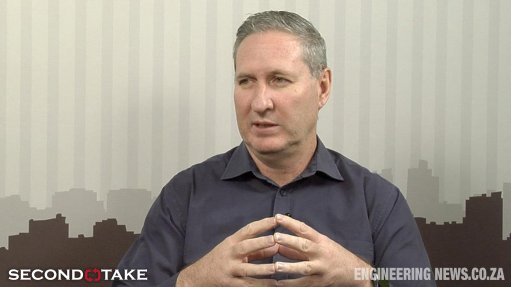Energy required
Opponents of President Cyril Ramaphosa’s strategy for tackling South Africa’s 14-year-old electricity crisis continue to argue, without evidence, that the interventions will have no impact on load-shedding because of the absence of ‘baseload’.
In reality, there is no, and never has been, a technical system requirement for ‘baseload’ – a term synonymous with the large coal and nuclear facilities that traditionally provided the cheapest electricity for meeting most of the demand. Instead, system operators are concerned primarily with ensuring that supply matches demand at all times and that electrical system frequency, which in South Africa is 50 Hz, is maintained.
In the past, the cheapest way to achieve that goal in South Africa was by building large coal-fired power stations to meet as much of the demand as possible. For commercial and technical reasons, these generators were never expected to meet all demand, however, as it would not have made sense to overbuild economies-of-scale sensitive inflexible generators to operate for only a few hours a day.
The residual demand was, thus, met using capex-lighter flexible generators that could be deployed quickly and in shorter bursts. Even if the electricity was significantly more expensive, such generators still made sense, as it would have been far too expensive to close the gaps using yet more ‘base’ supply.
In the emerging system, where the cheapest electrons are supplied by variable renewable-energy generators, the same logic prevails. As much of the demand as possible should be met using the cheapest generators – currently wind and solar plants – and any gaps should be filled with quick-to-deploy flexible, albeit more expensive, electrons.
Of course, the ancillary services that are coupled to the conventional plants will have to be factored in, along with the need for curtailment.
But system operators across the world are finding ways to address these technical issues in the interest of ensuring commercial viability and environmental sustainability. And the market is starting to respond to the availability of cheap electrons that, in future, will not be curtailed, but used to charge batteries or produce hydrogen molecules.
As to whether the addition of variable renewable energy can help reduce load-shedding, the answer can be found in models developed by Meridian Economics.
Using 2021 Eskom data, the models show that, had there been an additional 5 000 MW of wind and solar capacity available last year, that energy alone would have allowed Eskom to eliminate 96.5% of load-shedding.
“The extra renewable energy and capacity would have allowed more optimal use of the coal plant, the pumped-storage assets, and the open-cycle gas-turbine peakers, reducing the amount of diesel burnt by 70% to 80%.
“The remaining small fraction of load-shedding could have been eliminated by a modest expansion of Eskom’s interruptible load shed demand response programme or other aggregated demand response interventions, and 2 000 MW of one-hour batteries.”
Naturally, there is a need for both additional energy and capacity to comprehensively address the crisis, but it is absolutely wrong to argue that variable renewable energy will have no impact at all.
Comments
Press Office
Announcements
What's On
Subscribe to improve your user experience...
Option 1 (equivalent of R125 a month):
Receive a weekly copy of Creamer Media's Engineering News & Mining Weekly magazine
(print copy for those in South Africa and e-magazine for those outside of South Africa)
Receive daily email newsletters
Access to full search results
Access archive of magazine back copies
Access to Projects in Progress
Access to ONE Research Report of your choice in PDF format
Option 2 (equivalent of R375 a month):
All benefits from Option 1
PLUS
Access to Creamer Media's Research Channel Africa for ALL Research Reports, in PDF format, on various industrial and mining sectors
including Electricity; Water; Energy Transition; Hydrogen; Roads, Rail and Ports; Coal; Gold; Platinum; Battery Metals; etc.
Already a subscriber?
Forgotten your password?
Receive weekly copy of Creamer Media's Engineering News & Mining Weekly magazine (print copy for those in South Africa and e-magazine for those outside of South Africa)
➕
Recieve daily email newsletters
➕
Access to full search results
➕
Access archive of magazine back copies
➕
Access to Projects in Progress
➕
Access to ONE Research Report of your choice in PDF format
RESEARCH CHANNEL AFRICA
R4500 (equivalent of R375 a month)
SUBSCRIBEAll benefits from Option 1
➕
Access to Creamer Media's Research Channel Africa for ALL Research Reports on various industrial and mining sectors, in PDF format, including on:
Electricity
➕
Water
➕
Energy Transition
➕
Hydrogen
➕
Roads, Rail and Ports
➕
Coal
➕
Gold
➕
Platinum
➕
Battery Metals
➕
etc.
Receive all benefits from Option 1 or Option 2 delivered to numerous people at your company
➕
Multiple User names and Passwords for simultaneous log-ins
➕
Intranet integration access to all in your organisation





















